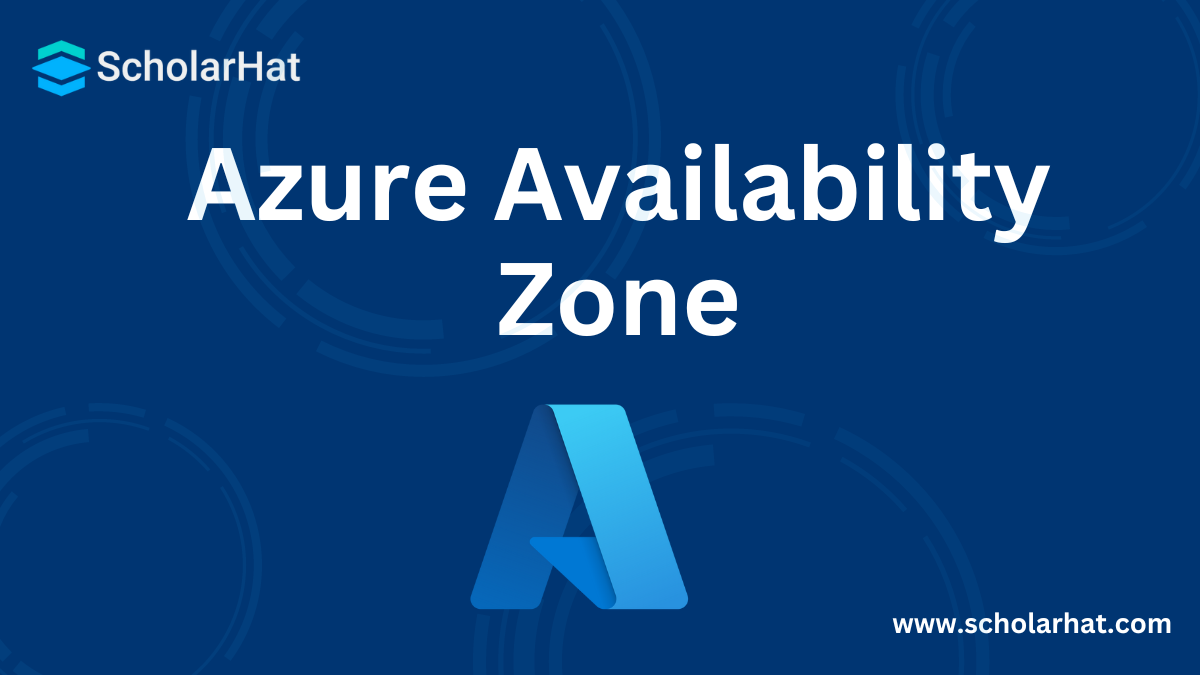18
AprAzure Availability Zone and Regions (Explained)
Azure Availability Zone
The digitalization of today has been increasing at a fast pace. And everyone wants to improve their performance which explains why Microsoft Azure is much appreciated in the current world of cloud services. One of them is the invention of an Azure availability zone, which serves as a distinct geographic area within Azure regions, isolated from the rest to minimize localized outages.
In this Azure tutorial, you will know about Azure Availability Zone, its usefulness, different ways it operates, among other things. Please sign up for our Azure Certification Trainingso that you may embark on your Microsoft Azure journey alongside experts.
| Read More: Top 50 Azure Interview Questions and Answers |
What is an Azure Availability Zone?
An Azure region is split into various locations known as Availability Zones. Consider them as sanctuaries for information you have stored and are running, controlled by diversified power, cooling and networking capabilities per zone. Ensuring that once one zone is failing, the applications escape unharmed since it spreads the risk mitigating on multiple zones.
Benefits of Availability Zones
- Enhanced Reliability- The provision of redundancy and fault tolerance are the key roles of availability zones. This is achieved by distributing resources widely, even in different physical locations within a region.
- Reduced Downtime- Organizations can lower downtime by sharing the amount of work to be done on multiple Availability Zones, thus ensuring that essential applications and services are continually available.
- Improved Performance- Availability Zones ensure that resources hosted in separate zones can communicate faster because connectivity between zones is low latency.
- Disaster Recovery- For disaster recovery, robust strategies are simpler because with availability zones data and applications can be replicated in many zones which saves data and guarantees data soundness.
- Scalability- Organizations meet increasing demands without unnecessarily causing scarceness because there is more ability in Availability Zones which enhances the scalability of applications.
How Availability Zones Work?
Availability Zones operate by distributing resources across isolated locations within a region. This means that if one zone encounters a hiccup, the others can still function, keeping your services uninterrupted. It's like having a backup plan for your backup plan.
Azure Regions with Availability Zones
Azure has Availability Zones in various regions around the globe, including:
- East US 2
- West US 2
- North Europe
- West Europe
- Southeast Asia
- Japan East
- Australia East
This Azure availability Zones list keeps growing as Microsoft continues to expand its cloud infrastructure.
Microsoft Azure Data Center Locations
Azure data centers are sprinkled worldwide to offer the best performance and reliability. Key locations include:
- North America: East US, West US
- Europe: North Europe, West Europe
- Asia: Southeast Asia, Japan East
- Australia: Australia East, Australia Southeast
These strategic placements ensure that users worldwide can access services with minimal delay.
| Read More: Azure Roadmap to Become Azure Developer |
Benefits of Deploying in Specific Regions
Deploying in specific regions can significantly benefit your business. It can enhance performance, comply with local laws, and reduce latency. For instance, having your services closer to your users means faster response times and happier customers.
1. Latency considerations
User experience is so important, especially in terms of how quickly things can happen in an application. By deploying resources in nearby locations guarantees your apps’ uninterrupted running by reducing latency. Azure offers tools to help measure and optimize latency, keeping your services snappy and responsive.
2. Data residency requirements
Various nations have varied data residency requirements, usually mandating that data be enclosed within national borders. Through having data centers in different regions, Azure addresses such demands, thereby assisting you in conforming to local regulations as you enjoy the cloud’s advantages.
3. Disaster recovery
Disaster recovery is a critical component of business stability. You can create strong disaster recovery strategies that keep your services operational even during major failures with Availability Zones. This includes copying data and apps across many zones to prevent data loss and downtime.
4. Choosing the right region
When deciding on the best Azure region for your needs, there are several factors to consider: user proximity, data storage laws, and services on offer. There are a wide variety of Azure regions to pick from, which means that you can opt to take the one that will be the most apt for what you specifically require.
What is an Availability Set?
An Availability Set is a logical grouping of Azure Virtual Machines that helps Azure understand your application's redundancy requirements. By placing VMs in an Availability Set, you're ensuring they are spread across multiple physical servers, racks, and storage units.
Benefits of Availability Sets
- To elevate the uptime, Availability Sets distribute virtual machines (VMs) over many faults and update domains.
- If any maintenance is being done in the system, the Availability Sets make sure that at least one VM is operational hence reducing the severity of downtime.
- The addition of VMs, as well as maintenance of fault tolerance and high availability, is possible because Availability Sets are present to scale applications.
- Availability Sets help drive down costs by reducing the potential losses that occur when service is interrupted or goes offline through keeping downtime to a minimum and ensuring uptime remains high.
How Availability Sets Work
Availability Sets work by organizing VMs into fault domains and update domains. Fault domains are like different racks within a data center, while update domains are groups of VMs that can be updated simultaneously. This ensures at least one VM remains operational during maintenance.
What is a Fault Domain?
A fault domain is a logical group of hardware that shares a common power source and network switch. It is sure that all virtual machines present in the availability set are not affected by the failure of one domain when the VMs are distributed over various fault domains.
When to use an Availability Zone vs. Availability Set
- Availability Zone: Use Availability Zones to guard against the complete data center malfunction and ensure high availability in case of its collapse.
- Availability Set: An Availability Set is an ideal one to save your data from crashing within a single server due to rack or entire server faults. At the same time, they both combine together so as to increase your workload resilience to even higher levels.
Azure vs. AWS: Regions and Availability Zones
| Feature | Microsoft Azure | Amazon Web Services (AWS) |
| Global Presence | Strong global presence with multiple regions and Availability Zones. | Extensive global coverage with numerous regions and Availability Zones. |
| Regions | Over 60 regions worldwide. | 30+ regions worldwide. |
| Availability Zones | Available in many regions, providing redundancy and high availability. | Also available in many regions, offering similar redundancy and availability. |
| Regional Presence | Strategically placed data centers for optimal performance and compliance. | Data centers are positioned to minimize latency and maximize performance. |
Conclusion
Azure Availability Zones and Availability Sets both combined together guarantee online and resilient applications. Make sure you know some of the other features and services available through Azure and sign up for our Azure Certification Course today!
FAQs
- zonal
- zone-redundant
- non-regional services
Take our Azure skill challenge to evaluate yourself!

In less than 5 minutes, with our skill challenge, you can identify your knowledge gaps and strengths in a given skill.








